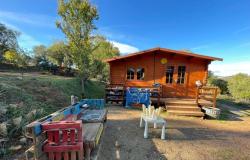
The cocina It is undoubtedly one of the most intervened spaces by interior designers and interior architects. We know that not only should it be functional, but it must also breathe style, order and coherence with the rest of the house. However, despite the effort to achieve well thought kitchens, there are recurring errors that make, Even the most beautiful space loses its charm.
To understand what details can be annoying – or directly consider them an error – we have talked to the Interior designer María Odenaa Professional with a critical and refined look that does not go with Rodeos. From little practical materials to aesthetic solutions that do not convince. In this interview, It reveals, as an expert, the things that you do not like in the kitchenand that you probably do not want in yours either. Take note!


Question: Is there any current trend in kitchens that, even if it is fashionable, does not convince you at all? Why do you think it doesn’t work in practice?
Lately, it’s very fashionable dispense with high kitchen furniture to breathe more space and have a more minimalist vision, but in the study We believe that these are very useful and necessary with the M2 that current homes have. And the return of the bright lacquer in the kitchen furniture is beginning to be seen.
Depending on its application, this may be a very good aesthetic and elegant option, but it must be taken into account that It is a material that looks moresince it reflects the light in it, but at the same time it is a very grateful material to clean.
Exclusive content! Get the free guide to choose the curtains and blinds that best combine with the decoration of your house. Download it for free!


Q: The kitchens open to the room have become the most demanded option, but … do your face also have? What does not quite convince you of this type of distribution?
Although this type of design has several advantages, such as the integration of spaces and lighting, it also has disadvantages that are worth considering. Next, I detail some of the negative aspects:
- Smell propagation: when cooking, smells can be dispersed throughout the house, which can be uncomfortable, especially if dishes with strong aromas are being prepared.
- Noise: The kitchen noises, such as appliances and utensils, can be annoying in the areas of being that are integrated into space.
- Cleaning maintenance: Since the kitchen is open, any disorder or accumulation of dishes can be visible to guests, which can create a sense of disorder in space.
- Storage space: Often, open kitchens have less space for storage, since space integration can lead to less efficient planning.
- Impact on temperature and heat distribution: The absence of walls can lead to poor heat distribution at home, especially if it is cooked frequently.
- Access of children and pets: Open kitchens can be less safe, since young children or pets can easily access dangerous areas.


In conclusion, although open kitchens can offer a modern and sociable design, it is important Consider these negative aspects Before deciding for this style. The choice of design should be based on the needs and lifestyles of residents, as well as the functionality and comfort of the home in general.
Q: What do you think of completely closed kitchens, without a single open module or shelf in sight? Do you think something is lost when you close everything so much?
Closed kitchens have their own advantages, also face certain challenges and disadvantages that can influence the decision to opt for this type of design. Here I expose some aspects to value:
- Privacy and comfort: Having a closed kitchen allows to cook and prepare food without being under the eyes of guests or family, which can generate a greater sense of comfort.
- Smell isolation: The smells of the kitchen usually remain in the closed space, which prevents them from spreading through the rest of the house.
- Noise reduction: Acoustic isolation helps minimize the noise of appliances and utensils, creating a quieter environment in living areas.
- Greater design flexibility: Closed kitchens allow more flexible planning in terms of distribution of furniture, storage and appliances.
- Maximization of space: A greater number of cabinets can be designed, allowing a more efficient storage of utensils and food.
- environmental pollution reduction: Separation of spaces can help reduce noise and environmental pollution from other areas.


Las disadvantages that are most valued under our experience With customers they are:
- Social isolation: The closed design can make whoever be cooking feel disconnected from the family or friends in the adjacent areas, reducing social interaction during events.
- Lack of natural light: If properly planned, closed kitchens may have less access to natural light, which can affect the perception of space and its environment.
- Visually smaller space: Depending on the size and configuration, a closed kitchen may seem smaller or less cozy compared to an open space, being able to cause a sensation of confinement.
Closed kitchens offer privacy and a controlled environment, which makes them an attractive option for many families, especially those who like to cook, value functionality and isolation.
Q: And on the contrary, what about those kitchens in which open shelves is abused? Is there a point where they stop being decorative to become a problem?
The shelves on kitchens are an element that You can have pros and cons. The open shelves Maximize vertical spaceallowing storing utensils, dishes, and spices in an orderly and accessible way, releasing space in cabinets. They can also become a design statement. They can be personalized with different finishes, and allow to show decorative elements, such as kitchen books, plants or articles of athletes that customize the space.
It must also be taken into account that open shelves They require more frequent cleaningsince the elements in sight They accumulate with dust and fatwhich can be tedious. If it is not properly organized, shelves can become a messy space, which can give a chaotic and disorganized appearance to the kitchen.


Q: In terms of materials, is there any that seem overvalued or not recommended in the day to day of a kitchen, no matter how nice?
Yes, when designing a kitchen, it is important Choose materials that are functional, durable and aesthetically attractive. However, some materials can be overvalued or not recommended for daily use in a kitchen, either because of its maintenance, durability or functionality.
- Wooden countertops: Uncreated or low quality wood can absorb moisture, spots and odors, which makes it recently practical for an environment where it is frequently cooked. Furniture or plywood surfaces can deteriorate quickly if they are exposed to moisture, something very common in kitchens.
- Marble or granite countertops: Although they are a popular and attractive material, countertops that are not sealed properly can absorb liquids and spots, affecting their appearance and requiring more maintenance.
- Ceramic tiles in frontal or walls: While they are popular, the grout between the tiles can be easily stained and difficult to clean, which can generate a careless appearance.


Q: What elements or accessories are usually included thinking that they will be useful, but that they only occupy space and do not contribute as much as it seems?
The indispensable accessories we use in our kitchens are The selection of waste to be able to recycle correctly and the coverings. From here, it depends a lot on how “cocinitas” are customers. Excess accessories believe that they cease to be useful, since these rThey equate space And they only serve something in particular and specific.
Join our WhatsApp channel and discover new ideas very the furniture for your home.
If you want to be up to date with everything we publish at www.elmueble.com, subscribe to our Newsletter.





